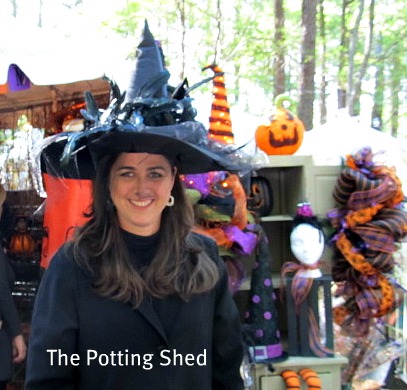In the middle of an upscale neighborhood,
in rural North Georgia,
sets a very small,
seemingly forgotten,
seemingly forgotten,
cemetery.
Multitudes of neighbors
drive past this tiny cemetery on a daily basis,
without casting a glance.
I wonder how many neighbors,
if any,
know anything about who rests here.
The cemetery is surrounded
by a decades, aged iron fence.
Each post,
acting with its brother as sentries,
protects the precious contents within.
Always in formation,
they have served their duty well.
A family plot,
high on a hill, in God's country,
shaded by Oak trees.
No head stones at first,
just a few rocks,
marked the remains of a family
who should not have been in Georgia.
You see, this family,
a family of Cherokee Indians,
lived with the whites
and shouldn't be here~
~here in this cemetery~
~here when they died.
Somehow,
Somehow,
no one knows exactly,
they were not forced,
like the others,
to leave Georgia
during the Indian Removal Act
during the Indian Removal Act
and travel the Trail of Tears.
Between 1790 and 1830 the population of Georgia increased six-fold. The western push of the settlers created a problem. Georgians continued to take Native American lands and force them into the frontier.
Cherokee had long called western Georgia home. The Cherokee Nation continued in their enchanted land until 1828. It was then that the rumored gold, for which De Soto had relentlessly searched, was discovered in the North Georgia mountains.
In 1830 the Congress of the United States passed the "Indian Removal Act." Although many Americans were against the act, most notably Tennessee Congressman Davy Crockett, it passed anyway.
In one of the saddest episodes of our brief history, men, women, and children were taken from their land, herded into makeshift forts with minimal facilities and food, then forced to march a thousand miles.
About 4000 Cherokee died as a result of the removal. The route they traversed and the journey itself became known as "The Trail of Tears" or, as a direct translation from Cherokee, "The Trail Where They Cried" ("Nunna daul Tsuny").
The descendents of Abraham Helton,
Cherokee Indian,
otherwise known as
John OWL,
lie here.
Cherokee Indian,
otherwise known as
John OWL,
lie here.
More than a century after their deaths,
and yet, still decades ago,
a monument marker
was placed in their memory.
A daughter, Malinda (Melinda) Helton,
married a Peter Pruitt (Prewitt) in 1853.
Peter joined the
Confederate States Army,
July, 1st, 1862.
Confederate States Army,
July, 1st, 1862.
He was captured
during the Battle of Champion Hill,
Vicksburg, Mississippi in 1863,
during the Battle of Champion Hill,
Vicksburg, Mississippi in 1863,
and became a prisoner of war ~
~ to be paroled, July, 1863.
I am not sure if he remained
in the CSA
or was sent home,
but he died shortly after
the war ended on January 25, 1866,
at the young age of 35.
Here lies Peter Pruitt,
a six foot, 4 inch tall,
brown hair, gray eyed,
a six foot, 4 inch tall,
brown hair, gray eyed,
Civil War Veteran,
who fought for his way of life,
and loved his wife and family.
and loved his wife and family.
A family whose roots came from
those who inhabited this land
by birth and who by the
Grace of God
were "allowed" or "left"
to live their lives here.
As I was leaving
the cemetery,
it began to rain ~
and seemed so appropriate,
as I thought of the Trail of Tears,
and the Indians who suffered so much ~
~ and the sadness
Melinda Pruitt must have felt
at losing her husband at such a young age.
I will never drive by this cemetery again,
without nodding my head in respect,
praying for the repouse of their souls,
and remembering this, often times,
overlooked family and their resting place.
Resting, literally feet,
from twentieth century homes ~
~ Here lies Peter Pruitt ~
~ the Helton Family ~
the descendents of
"John" OWL ~
~ May they Rest in Peace ~
Be the Authentic You!
Blessings,
Martha
Credits and Information:
http://www.generalbartonandstovall.com/MUSTER_ROLL_OF_COMPANY_G3.pdf
http://genforum.genealogy.com/helton/messages/3213.html






































































































































































































